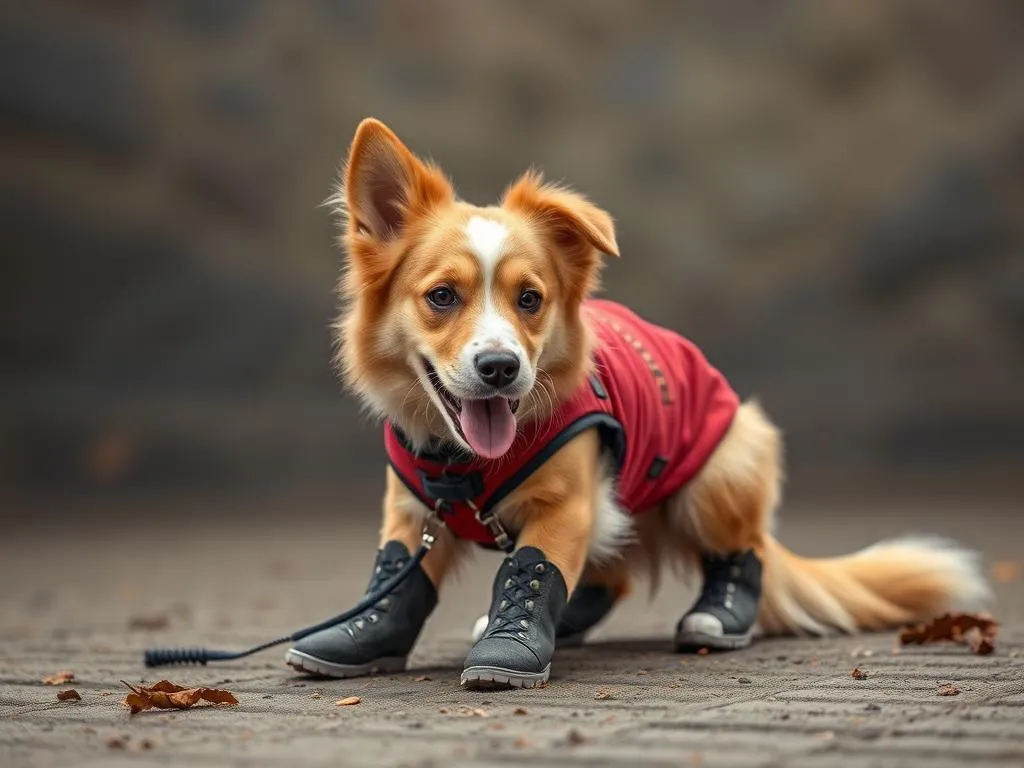
Understanding the Need for Dog Boots
Dog boots serve as an essential accessory for pet owners who want to protect their furry friends from various environmental hazards. Training your dog to wear dog boots is crucial, especially when considering the different weather elements and risks that can harm your dog’s paws.
Protection from Weather Elements
In colder climates, snow and ice can be harsh on your dog’s paw pads. The cold can cause discomfort and even frostbite if left unprotected. Dog boots provide an insulating layer, keeping your pet warm and comfortable during winter walks.
Conversely, in hot weather, pavement and other surfaces can reach extreme temperatures, burning your dog’s paws. Learning how to train your dog to wear dog boots is vital to ensure that your dog can enjoy outdoor activities without injury.
Injury Prevention
Sharp objects like glass, stones, and thorns can easily injure your dog’s paws while walking in unfamiliar areas. Dog boots act as a protective barrier, preventing cuts and scrapes. This added layer of protection is particularly important for adventurous dogs who love exploring.
Health Benefits
For dogs with specific health conditions, like paw pad allergies or wounds, wearing boots can significantly improve their quality of life. Dog boots keep allergens at bay and protect existing injuries from dirt and grime, aiding in the healing process.
Choosing the Right Dog Boots
Before diving into training, selecting the right dog boots is essential. Here are some factors to consider:
Factors to Consider
-
Size and Fit: Proper sizing is crucial. Measure your dog’s paws by tracing them on paper and measuring the width and length. Most brands provide sizing charts to help you find the perfect fit.
-
Material: Look for durable yet comfortable materials. Rubber soles provide traction and protect against sharp objects, while breathable fabrics keep your dog’s paws dry.
-
Design: Opt for boots that are easy to put on and take off. Velcro straps or slip-on designs can make the process smoother for both you and your dog.
Recommended Brands and Products
Some popular options for dog boots include:
- Muttluks: Known for their warmth and comfort, these boots are perfect for cold weather.
- Ruffwear Grip Trex: These are excellent for all-terrain adventures, providing great grip and durability.
- Pawz Rubber Dog Boots: These are disposable and work well for short trips outside.
Preparing Your Dog for Training
Before starting the training process, assess your dog’s temperament and ensure a positive atmosphere.
Assessing Your Dog’s Temperament
Understanding your dog’s personality is crucial. Some dogs may be more curious and open to new experiences, while others might be hesitant or anxious about unfamiliar objects. Tailor your training approach based on your dog’s unique characteristics.
Creating a Positive Environment
Choose an area that is free from distractions, where your dog feels safe and comfortable. A calm atmosphere will make it easier for your dog to focus on the task at hand.
Step-by-Step Guide to Training Your Dog to Wear Dog Boots
Introduction to the Boots
Start the training process by introducing the dog boots to your pet.
Letting Your Dog Explore the Boots
Place the boots on the ground and allow your dog to sniff and explore them. This exploration phase is crucial for reducing anxiety and building familiarity.
Positive Reinforcement
Use treats and praise to create a positive association with the boots. When your dog shows interest, reward them with a treat and lots of affectionate words. This encouragement will build confidence and make them more willing to participate in the training process.
Getting the Boots On
Once your dog is comfortable with the boots, it’s time to put them on.
Gradual Introduction
Start with just one boot. Gently slide it onto your dog’s paw and secure it. Keep the session short to avoid overwhelming your dog. If they resist, don’t force it; instead, go back to the exploration phase.
Ensuring Comfort
Check to see that the boot fits properly. It should be snug but not too tight. Adjust as necessary to ensure your dog is comfortable.
Short Practice Sessions
After your dog is accustomed to wearing one boot, gradually increase the number of boots.
Walking Indoors
Encourage your dog to walk around indoors on soft surfaces. This will help them adjust to the feeling of wearing boots without the distractions of the outdoors.
Rewarding Progress
Continue to use treats and praise when your dog walks with the boots. Celebrate small victories, as this will motivate your dog to keep wearing them.
Increasing Difficulty
Once your dog is comfortable walking indoors, it’s time to take the training outside.
Outdoor Walks
Start with short trips around your yard or a safe area. Monitor your dog closely to see how they respond to the boots in a new environment.
Varied Terrain
Gradually introduce different surfaces, like grass, pavement, and dirt. This will help your dog become accustomed to how the boots feel on various terrains.
Building Duration
As your dog becomes more comfortable, focus on extending the duration of wear.
Extending Wear Time
Gradually increase how long your dog wears the boots. Start with a few minutes and slowly build up to longer periods.
Monitoring Comfort Levels
Pay close attention to your dog’s body language. Watch for signs of discomfort, such as lifting their paws or trying to remove the boots. If you notice these signs, take a step back and make the training process easier.
Common Challenges and Solutions
While training your dog to wear boots can be rewarding, it may come with its challenges.
Reluctance to Wear Boots
If your dog shows fear or anxiety, try to identify the cause. It may be the sensation of the boots or the sound they make. To overcome this, return to the exploration phase and allow your dog to become more familiar with the boots.
Removing Boots
Some dogs may try to take off the boots. If this happens, ensure that the boots fit correctly and aren’t too tight or uncomfortable. Also, consider using a distraction, like a toy or treat, while you put the boots on your dog to keep their attention.
Adjusting to Different Weather Conditions
Dogs may react differently to wearing boots in various climates. Start slow, allowing your dog to wear the boots in mild weather before introducing them to extreme conditions. Monitor their comfort closely and adjust as needed.
Maintenance and Care for Dog Boots
To ensure your dog boots last, regular maintenance is essential.
Cleaning and Storage Tips
Keep the boots clean by wiping them down after each use. Most dog boots can be washed, but always check the manufacturer’s instructions. Store them in a cool, dry place to prevent mold or damage.
Regular Checks for Wear and Tear
Regularly inspect your dog’s boots for any signs of wear and tear. Look for cracks, tears, or a loss of elasticity. If the boots no longer fit properly, consider replacing them to ensure continued protection for your dog.
Conclusion
Training your dog to wear boots is an important and beneficial process that can significantly enhance their comfort and safety during outdoor activities. By understanding the need for dog boots, choosing the right ones, and following a structured training approach, you will foster a positive experience for both you and your pet.
Patience and consistency are key—every dog is different, and it may take time for your furry friend to feel completely comfortable wearing boots. Celebrate each small victory and enjoy the journey together.









